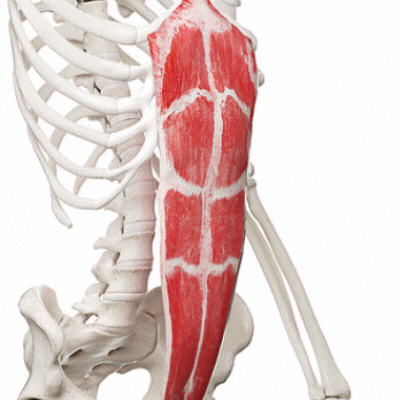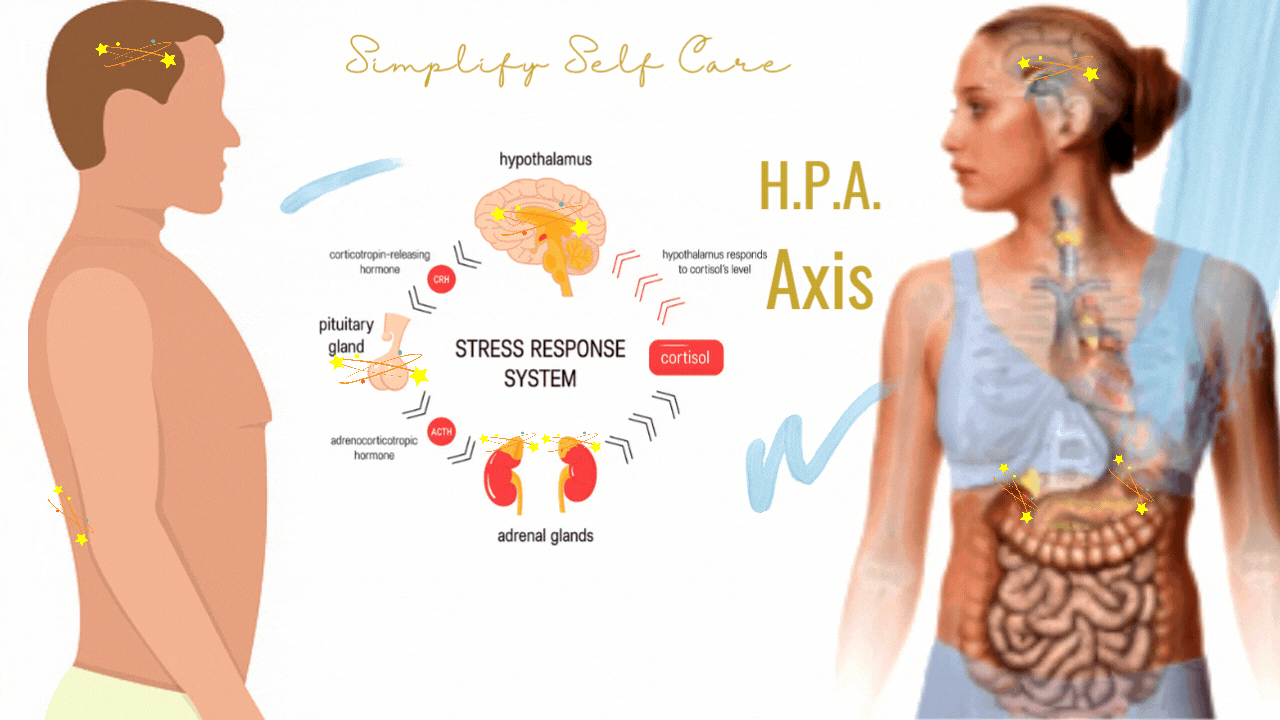Incontinence urge, ED, and Back Pain can improve and may even be eliminated using something I call E for E breathing throughout your day.
Our body basics are NOT too complicated for us to understand.
As is often the case, chronic conditions: of incontinence, urge, ED, and even many back pains are typically labeled as ‘complicated’. Please try to stay out of that ‘powerless’ trap of thinking your body is too complicated.
There are Simple explanations for many, many chronic conditions. I’m not naively saying the body is SIMPLE; I’m fully aware of how intricately complicated it is.
I know we do not have all the answers to so many things, BUT I also know there are many things about our bodies that we do know and are at the crux of many chronic conditions.
Incontinence urge, ED, and Back Pain have the possibility of improving when we leverage the way the body is set up to work. That’s where I’d like to start.
Post category
Common Conditions
Fatty Liver, Indigestion, Incontinence…
I hope you give today’s Action Steps 90 Days to help you Optimize Your Body‘s most important spine stabilizer.
The spine’s number 1 stabilizing muscle is the Diaphragm. It impacts many conditions and happens to have a HUGE influence on the pelvic floor.
Let’s walk through how the body is set up to work so we can leverage that in a focused way to get RESULTS.
Let’s jump in!
Blame and focus for:
- Incontinence, Urge
- Erectile Dysfunction
- Backaches and pain
Are commonly placed on the pelvic floor and abdominal muscles.
But BOTH the pelvic floor muscles and abdominal muscles are dependent on the strength of the Diaphragm Muscle. as well as a strong Vagal tone.
So although the ABs and Pelvic Floor Muscles are important to strengthen, they are Step 2.
The Diaphragm and Vagus Nerve need to be addressed first for the others to be effective at their jobs.
This is often why, try as you may with targeted exercises; the exercises fall short. Let’s look at WHY.


The more effective approach to improving Incontinence, Urge, ED, and Back Pain is to first:
- Calm/tone your vagus nerve and
- Strengthen your diaphragm muscle.
Both can be achieved by using the E for E breathing technique throughout the day.


Today’s Simple Self Care Tip:
Use E for E breathing technique throughout your day.
Here is what we will cover:
- How to do E for E
- When to use it
- Your biggest Hurdle
- Why the E for E technique works
- Wrap up and links/resources for you
How to do E for E
The 2 Steps
Step 1
1. Sit up very TALL. Inhale through your nose.
At the same time, relax your jaw. Simply allow your mouth to be slightly ajar.
Exhale.
Now Repeat Step 1, and on the EXHALE part, add Step 2 to the action.


Step 2
2. Press the lower 3rd of your tummy muscles (the region that is from your belly button down). 👍🏻
This setup & action presses the air upward and out of your abdominal cavity.
So you sit tall. Inhale through your nose a very deep breath. Then with a relaxed jaw and tongue, you press the lower third of your abs, which presses the air up and out of your slightly open mouth.
When to use this E for E technique:
Everything and anything you use EFFORT for throughout the day is when to use this E for E technique.
The Exhale is on the Effort of the action you are doing. (That’s where the E for E name originated from)
Here are Examples of Everyday actions where we can use E for E.
EXAMPLES of When to Use E for E:
- getting in and out of bed
- lifting something or someone
- pulling against resistance i.e. raking, an exercise band,
- pushing an object- like a vacuum, wheel barrel, carriage…
- getting in and out of your car
- the effort phase of an exercise,
- standing up or on your way down to your chair (avoid plopping into your seat!)
- up and down from the toilet
- …. you get the idea.
…slightly open your mouth… then
Press your lower abs, and you are using E for E.
Pick 1 or 2 Actions to get started.
I’d suggest starting your day off with consciously doing the E for E as you get out of bed.
Pick another few spots in your day to get up and running until you are consistently doing these few dedicated times.
Then, you’ll see, over time; you’ll be adding a few more focused spots in parts of your day where you recognize it makes sense.
Each time you use E for E, you’ll be toning your vagus nerve AND training your diaphragm. (details of why it works are further down 😉)
It’s that simple!
Done repeatedly throughout your day E for E will strengthen your diaphragm and work to balance the tone of your Vagus Nerve so you can add in the other muscles to improve incontinence urge, ED, and Backaches/pains.
Using E for E day in and day out for a minimum of 90 days will reap exponential benefits.
Today’s SIMPLE Self Care TIP: Use E for E throughout your day to reduce/eliminate incontinence, urge, ED backaches and pains.
👉🏼 Now for Your Biggest Hurdle
Remembering to do it. YUP that is the biggest hurdle.
Doing E for E throughout your day is SIMPLE but can be hard to remember!
It is remembering to do it that is the challenge.
Use reminders for a while.
- Phone reminders,
- Electronic reminders,
- You know I’m a fan of Post-it reminders.
Strategically place them throughout your:
- home
- car and
- work
90 days in, and they can all disappear 😁 because you will have formed a habit.

You Could Also Try Out The MOtivator APP.
This is an APP I’ve had made for you to help support your journey of creating The Simple Self Care Lifestyle you’d like.
It provides a SIMPLE way for you to see all the Good Self Care Micro Decision you making for yourself, including the E for E breathing.
This APP is designed to help motivate our brains to be on the lookout for another Self Care Micro Decision we can make. And provide positive feedback along the way TOWARD the RESULTS we want.
Each time we press that + button, we see our number go up, and get a quick GOOD MOOD Hormone Hit! This can help our brain count each Self Care Micro Decision as a positive action.
For more info, see the Micro Decisions Post.
To get on the list for the FREE APP (another Self Care Tool I’ve made for you), simply let me know you’d like the link sent to you using this form.
It’s releasing soon, those on the list will be the first to know!- Be sure to drag my emails to your priority folder.

The Simple Self Care Lifestyle
MOtivator APP
Now for Why E for E breathing technique works
Incontinence, urge, ED, Back-pain are improved, even eliminated by toning your body’s longest nerve first because it helps reset your fight or flight response.
Our 3 Organs that regulate our fight/flight response are called on so chronically these days that we don’t even recognize they are on overdrive anymore.

Training the 3 Organs each day will rebalance and ‘tone’ your vagus nerve.
The Importance of Your Vagus Nerve Being Toned
All the messages being transmitted from your brain to your organs improve when it is NOT in flight or fight mode.

Read some Subscribers Unexpected RESULTS after 90 Days of HPA Axis
The left side with the blue writing is improved when our Vagal Tone is Improved.

Toning your Vagus Nerve will improve everything, including:
- incontinence (urine leakage),
- backaches & pain, and
- erectile dysfunction.
This is because as your vagus nerve ‘re-tones, ’ your stress hormones won’t kick in as high or frequently.
Just one of the MANY positive results from having a ‘toned’ HPA Axis is an overall reduction of your baseline stress hormones.
The reduction of the amount and frequency of excess stress hormones can help our bodies in many ways.
To list just a few benefits:
- Increase blood flow to regions like our pelvic floor, neck, shoulders, and lower back.
- Deeper more rhythmic, relaxed breathing will increase oxygen intake.
- Less anxiety, better sleep, improved mood, digestion, weight control…the list is long.
The positive impact is exponential because each benefit positively impacts the organ function throughout our body.
If you are new here, the 3 videos on your HPA Axis: the Intro, The Stress Less Sleep More, and The 3 Techniques are on the HPA Axis post. Here’s where to find them.
The positive effect of Training the Vagus Nerve Is:
Reduced circulating stress hormones which is supportive of
- Reduced incontinence,
- Less ED, and
- Fewer Backaches and pain.
The Positive Effect of Training the Diaphragm Is.
Your Pelvic Floor Muscles will become stronger, as will your entire abdominal core.
This is because your diaphragm muscle is a part of your abdominal cavity. Below are pictures of the lower portion of the male and female abdominal cavities.
Both are side views that show how the bladder, bowel, and for females, the uterus are positioned above and then through the pelvic floor.
A balanced tone of the pelvic floor muscles is important in reducing/eliminating incontinence, urge, erectile dysfunction, backaches, and pain.


👉🏼 The strength/tone of the pelvic floor muscles, shown above, are dependent on and greatly influenced by the strength/tone of the diaphragm muscle.
Here’s the setup:
At the top of your abdominal cavity is your diaphragm.

It’s your spine’s number one stabilizing muscle! Yet when do we ever hear about toning it?….😞 That’s a whole post on its own…
So the diaphragm is the TOP of the cavity we are focused on.
Your pelvic floor muscles are at the BOTTOM of the abdominal cavity.
The ABS are one side wall. The Back Muscles are the other side wall.
Think of the abdominal cavity as a pressurized box.
All 4 sides of the box WORK TOGETHER to help keep the contents (in this case, your organs) in place.

If we only train the abs and pelvic floor, we are missing 2 sides of the box! This means we are only raining and strengthening 1/2 of this cavity that is set up to work under pressurized conditions!
NEXT issue of training abs without the E for E breathing Technique:
You are inadvertently weakening your pelvic floor and diaphragm. There are no amount of kegels that can catch up. When my Postnatal classes trained their diaphragms FIRST. The efforts they then placed into training their pelvic floor and abs paid off!
If your mouth is closed and you press with your mid and upper ab muscles, the diaphragm can’t go up; it presses down
When your diaphragm, is pressed down, the pressure is placed on the pelvic floor muscles. This means your pelvic floor muscle are also going downward. The exact opposite we want.
The pelvic floor receives downward pressure, and your back is stressed.

When our mouth is open, and we use the lower 1/3 of our abs to PRESS, the air comes up and out of our open mouth, and we strengthen all 4 sides. BEAUTIFUL!
A perfect example of leveraging how the body is set up to work so we get RESULTS!

By using E for E having your mouth open as you press with the lower 3rd section of your abs: the diaphragm can go upward. The pelvic floor muscles work in sync, contracting upward. Your back is protected/stabilized.
The result of a strong diaphragm is:
Your pelvic floor and back muscles have less of a burden when you lift, pull, or push things.
This is WHY training your Diaphragm BEFORE focusing on training your Pelvic floor and Ab muscles is the best first step toward achieving your goal of less:
- Incontinence, urge
- Erectile Dysfunction
- Backaches and pains
Your toned diaphragm sets you up to effectively tone your pelvic floor.
Pelvic floor muscles (PFMs) play a crucial role in urinary continence. …The greatest difference in PFMS was in the PFM training group, but diaphragm training had the best effect on PFME. (1)(bold added)
The effect of diaphragm training on lumbar stabilizer muscles: a new concept for improving segmental stability in the case of low back pain (2)
E for E trains your diaphragm and pelvic floor.

Downward Pressure on Pelvic Floor is Reduced
When we exhale using the E for E technique, the downward pressure on the pelvic floor is reduced tremendously.
And as the diaphragm strengthens, the mechanics are such that the pelvic floor can then effectively strengthen as well.
This is because you are setting the diaphragm and pelvic floor to work in unison, as shown below on the left.

The diaphragm flattens upward, and the pelvic floor can rise when using E for E.
Illustrated on the right is what happens when we hold our breath.
Abs press from the middle and upper ab region, and this places pressure downward.
Our spine is less stable, and our pelvic floor is weakened from excess pressure.
Here is When Holding Your Breath is Better than E for E
Now there is a time and place for holding your breath when lifting. When you KNOW the object is SUPER heavy. Use E for E to first Stabilize. Then close the mouth for the small stint of time you need the extra oomph.
Your trained diaphragm and pelvic floor muscles will be better able to handle the extra pressure you are asking from them during these times.


A Toned Vagus Nerve and Diaphragm
- Improve abdominal cavity stability.
- Improve Pelvic Floor Muscles.
The result:
- Incontinence Urge (Urine leakage) is reduced. This is because the toned pelvic floor muscles help keep the bladder and other organs in place. (Less ongoing pressure)
- Erectile Dysfunction is reduced. A strong pelvic floor can help improve blood flow to the penis. Blood flow is essential for achieving and sustaining an erection. Also, the reduction of the downward pressure on the penis helps to get and maintain an erection.
- The abdominal strengthening exercises you do can be more effective.
- Backaches and pains caused by a weak abdominal cavity improve.
- The stable abdominal cavity decreases excess pressure on back muscles. Blood flow to the back muscles improves as well. Both are essential for reducing and eliminating back pain.
Wrap-up and Resources for you
The key starting point, as with pretty much ALL imbalances we experience, is to
- Train your body’s longest cranial nerve. Your Vagus Nerve throughout the day and 🔗 as you fall asleep as well! Now that’s SIMPLE 🤗
and –
2. Layer on diaphragm work using E for E throughout your day.
The Simple Self Care Tip:
Use E for E throughout your day to set your body up to improve/resolve:
- Incontinence,
- Erectile Dysfunction,
- Backaches & Pain.
For severe cases of Incontinence urge, ED, Backaches, and pain, E for E minimally provides the foundation for more success as you layer on additional protocols.
Training your Vagus Nerve & Diaphragm :
Vagus Nerve Training: Calm during the day. SOUND Sleep.
Diaphragm Training. Posture Routines Seated. 💪🏻 2.5, then 5 minutes, 15 minutes to the full 20-minute Routine, incrementally training your diaphragm, all the while transforming your Posture too!

I hope this information is helpful for you and that you give 90 Days a try. 90-day check-off sheet for you. I hope you Go For It! I’m rooting for you!

E for E Breathing Technique is Also used for:
References I’ve compiled and linked for you are further down.
The Simple Self Care Lifestyle
When you find out how achieving 1 GOAL will make every other health, wellness & fitness GOAL that you have achievable- it SIMPLIFIES everything.
(mo)
THe simple self care lifestyle
Simplify
self care
Post categories







I’m glad you are here…
SHOP Products
Personal Products
Healthy Home
Quality Supplements
Things to Keep Handy
Quality Food Sources
Simple Self Care Programs
🌿 Resources for you
Zachovajeviene B, Siupsinskas L, Zachovajevas P, Venclovas Z, Milonas D. Effect of diaphragm and abdominal muscle training on pelvic floor strength and endurance: results of a prospective randomized trial. Sci Rep. 2019 Dec 16;9(1):19192. doi: 10.1038/s41598-019-55724-4. PMID: 31844133; PMCID: PMC6915701.
Finta, Regina et al. “The effect of diaphragm training on lumbar stabilizer muscles: a new concept for improving segmental stability in the case of low back pain.” Journal of pain research vol. 11 3031-3045. 28 Nov. 2018, doi:10.2147/JPR.S181610
Yu X, Jiang HY, Zhang CX, Jin ZH, Gao L, Wang RD, Fang JP, Su Y, Xi JN, Fang BY. The Role of the Diaphragm in Postural Stability and Visceral Function in Parkinson’s Disease. Front Aging Neurosci. 2021 Dec 23;13:785020. doi: 10.3389/fnagi.2021.785020. PMID: 35002681; PMCID: PMC8733584.
Martí-Salvador M, Hidalgo-Moreno L, Doménech-Fernández J, Lisón JF, Arguisuelas MD. Osteopathic Manipulative Treatment Including Specific Diaphragm Techniques Improves Pain and Disability in Chronic Nonspecific Low Back Pain: A Randomized Trial. Arch Phys Med Rehabil. 2018 Sep;99(9):1720-1729. doi: 10.1016/j.apmr.2018.04.022. Epub 2018 May 19. PMID: 29787734.
Resources
Park, Hankyu, and Dongwook Han. “The effect of the correlation between the contraction of the pelvic floor muscles and diaphragmatic motion during breathing.” Journal of physical therapy science vol. 27,7 (2015): 2113-5. doi:10.1589/jpts.27.2113
Sapsford RR, Hodges PW. Contraction of the pelvic floor muscles during abdominal maneuvers. Arch Phys Med Rehabil. 2001 Aug;82(8):1081-8. doi: 10.1053/apmr.2001.24297. PMID: 11494188.
Neumann P, Gill V. Pelvic floor and abdominal muscle interaction: EMG activity and intra-abdominal pressure. Int Urogynecol J Pelvic Floor Dysfunct. 2002;13(2):125-32. doi: 10.1007/s001920200027. PMID: 12054180.
Madill SJ, McLean L. Quantification of abdominal and pelvic floor muscle synergies in response to voluntary pelvic floor muscle contractions. J Electromyogr Kinesiol. 2008 Dec;18(6):955-64. doi: 10.1016/j.jelekin.2007.05.001. Epub 2007 Jul 23. PMID: 17646112.
Madill SJ, McLean L. Relationship between abdominal and pelvic floor muscle activation and intravaginal pressure during pelvic floor muscle contractions in healthy continent women. Neurourol Urodyn. 2006;25(7):722-30. doi: 10.1002/nau.20285. PMID: 16817184.
Gatzoulis MA: Anatomy of breathing. In: Standring Susan (ed) Gray’s Anatomy, 40th ed. Churchill Livingstone, 2008, pp 1011–1012.














